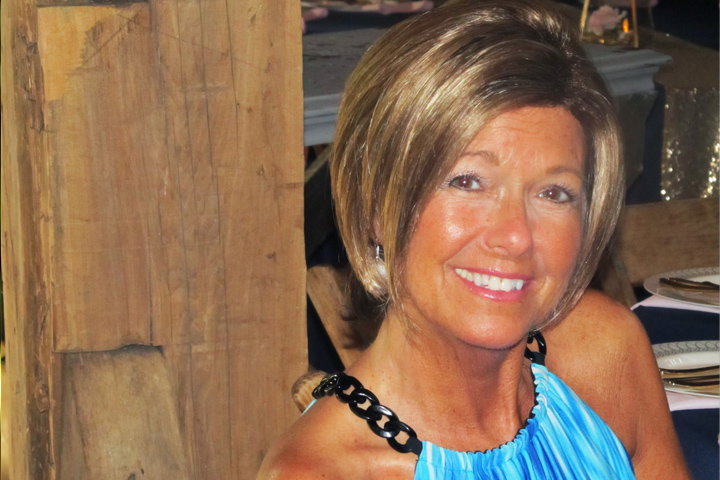The Relatively New Procedure of Irreversible Electroporation Has Given Me Time

- Treatment with FOLFIRINOX
- Radiation to further shrink the tumor
- I qualify for a new treatment—irreversible electroporation
- Maintenance chemotherapy with gemcitabine
- Cancer returns and more treatment starts
On August 4, 2015 I was diagnosed with stage III pancreatic cancer with very extensive vessel involvement.
I was a healthy 58-year-old woman. I exercised all my life, ate healthy, and never smoked or drank alcoholic beverages. I had no health conditions, needed no medications, and had no history of any cancer in my family. One day I began to experience some abdominal pain I soon developed an inability to eat, along with weight loss. This was not normal for me, so I quickly heeded my body’s call. As a longtime hospital employee I knew what kinds of tests were needed and so went right to a surgeon. He wasted no time in ordering all the right tests to rule out everything minor that he expected to see. He then ordered a CT scan, which found the “silent” culprit: pancreatic cancer
Starting Treatment with Chemotherapy
A consult with the surgical team at Allegheny General Hospital confirmed that my tumor was inoperable due to the vessel involvement. I was quickly referred to oncologist Dr. Moses Raj, who developed a treatment plan. The treatment began on September 10, when I received my first doses of leucovorin, irinotecan (Camptosar), oxaliplatin (Eloxatin), and fluorouracil or 5-FU, a combination known as FOLFIRINOX.
The treatment was tough for sure, with side effects including early onset neuropathy, skin problems, mouth sores, difficulty swallowing, diarrhea, nausea, fatigue, and low white blood cell counts that compromised my immune system. I took chemo rescue drugs, which really helped to make the side effects a lot more tolerable. I was given injections of Neulasta at each treatment, to rally my white cell counts. Although thankful for medicine to improve my immune system, the side effects were really harsh; I suffered from extreme fatigue and indescribable muscle aches.
Radiation Is the Next Step
After my chemotherapy was completed on January 20, 2016 I received five very aggressive radiation treatments. I was blessed that they were able to place two fiducial markers in my tumor via an esophagogastroduodenoscopy (EGD) procedure. These targets provided a good bullseye for my radiation. The radiation team happily reported that the markers “lit up like Christmas trees.” After my chemo and radiation was complete, my doctors gave me a much-needed two-month rest.
Irreversible Electroporation to Knock Out the Tumor
In late March of 2016, Dr. Raj shocked me with the news that the Allegheny General Hospital multidisciplinary team felt I was the perfect candidate for a new type of surgery: irreversible electroporation (IRE). He referred me to a young, very motivated Dr. Suzanne Schiffman, who had done several of these procedures in her internship under the guidance of Dr. Robert Martin, a leading practitioner of the technique. After some hesitation and much prayer, I gave the go-ahead for this very awesome, life-giving surgery. In IRE, electrodes are placed throughout the tumor and electrical pulses are sent into the tumor, causing the cells to die. I had this miraculous surgery on April 26, 2016. The recovery was a little bit tough; I spent eight days in the hospital.
Maintenance Chemotherapy until a Recurrence
It has been more than a year since my surgery. In spite of the fact that my tumor did not shrink away from the vessels enough to provide a good operative window for the Whipple surgery, this treatment very positively impacted my life. I have been given more time and more hope for a cure to be found or new advancements in treatments to be developed. I have been told by my surgeon that if I meet the criteria, I could have this treatment done again if necessary.
I was in a maintenance chemo program, and was treated with gemcitabine (Gemzar). I had six months of treatment, rested for two, and went back into treatment again. The side effects were very minimal and well-managed with the rescue drugs. My platelet counts were affected more with this treatment. I tried to do a combination treatment with Xeloda but I was not able to tolerate this drug, so we discontinued this drug.
All my scans of the pancreas were clean until Spring 2017, when a PET scan revealed a cancerous lymph node in my groin. I had laparoscopic surgery to free the node from the bowel for radiation. Exploratory surgery found a tiny cancerous growth on my peritoneum; the growth was removed. I am now undergoing radiation treatment for 12 sessions. This will be followed by more chemotherapy.
My faith in God has been an important part of this journey. I also credit a supportive and loving family and team of awesome friends that have loved me through the hardest time in my life. I pray that you may have these same strengths in your trudge through this awful disease—faith, family, and friendships!
Shortly after her story was published, Leslie passed away. She shared the different treatments she underwent to give hope to others. We offer our deepest sympathy to her family.






